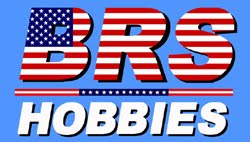*** Estimated Availability is August/September 2011 ***
NINCO #50588 CITROËN C4 WRC TOTAL LIGHTNING
The king of Rallyslot. NINCO LIGHTNING version with 3/32” slot racing parts fitted as standard. Out of the box, high performance mechanical equipment including ProShock suspension, double race bushings, ProRace V.03 wheels, 27T crown gear, 9T pinion gear, transparent Lexan chassis with machined engine mount, NC-12 “Crusher+” 23,500 RPM motor, ProRace 2.38mm stainless steel axles and ProRace body screws.
NINCO #50587 JAGUAR XK-120 DONINGTON
New replica of an historic model for the NINCO Classic collector. Excellent reproduction of the car with maximum attention to detail, chrome wheels, etc. In-line NC-5 power.
NINCO #50580 RENAULT MEGANE TROPHY N4 LIGHTNING
The ideal slot car for Club racing. LIGHTNING version with 3/32” racing material as standard equipment. Ready to race out of the box, a good choice for any driver. Longer, deeper slot guide, 23,500-RPM NC-12 “Crusher+” motor and silicone cables. ProRace chassis with frame, Lexan interior, anglewinder 32z/12z gearset, 17-inch wheels with ultra low profile tires in front and 20x10 at the rear.
NINCO 1 #55041 RENAULT MEGANE TROPHY N4 N-DIGITAL
NINCO 1 version of the Megane Trophy N4 with installed Digital “chip” as standard for NINCO N-DIGITAL slot racing. Usual NINCO 1 slot car mechanics.
NINCO 1 #55033 FORD MUSTANG GREEN
Striking and colorful decoration of the iconic Ford Mustang. Usual mechanical set up for NINCO 1, ideal handling for the home and casual racer. NC-11 motor.
NINCO 1 #55038 FORD MUSTANG GREEN N-DIGITAL
NINCO 1 digital version with installed N-Digital “chip” as standard for NINCO N-DIGITAL slot racing.
NINCO 1 #55032 FORD MUSTANG OHIO
Another unique decoration of the iconic Ford Mustang. Usual mechanical set up for NINCO 1, ideal handling for the home and casual racer. NC-11 motor.
NINCO 1 #55037 FORD MUSTANG OHIO N-DIGITAL
NINCO 1 digital version with installed N-Digital “chip” as standard for NINCO N-DIGITAL slot racing.
NINCO 1 #55039 RENAULT MEGANE TROPHY V6
Official Renault Megane Trophy Decoration. This slot car will be included in the NINCO Eurocup Megane Circuit race set, available individually as well. Usual NINCO 1 mechanics, ideal for the home and casual racer. NC-11 motor.
NINCO 1 #55040 RENAULT MEGANE TROPHY V6 N-DIGITAL
NINCO 1 digital version with installed N-Digital “chip” as standard for NINCO N-DIGITAL slot racing.
NINCO #80889 ProRace Motor Mount
Replaces previous model (black): better performance, new design, new material and reinforced with ribs. Includes 2 screws to prevent motor torque.
NINCO #80432 4 x DOUBLE BRONZE PRORACE EVO BUSHINGS 3/32”
NINCO XLOT #60008 BMW M3 E30 PONCE METAL
NINCO 1/28 scale XLOT expands its range of models with the BMW M3 from the mid 80's. A reference in the history of motor racing. This decoration is the unmistakable car of driver José María Ponce Canary, with the 7UP livery. With its all metal chassis, belt driven XL-1 motor, the well known mechanical set up of XLOT is ready compete anywhere, and with plenty of settings available to customize the set up according to each driver.
NINCO XLOT #60013 BMW M3 E30 PONCE FLEX
NINCO 1/28 scale XLOT - The big news in 2011 is the new plastic chassis in all new cars. The M3 7UP is part of the new FLEX chassis family, with its unique chassis with fullly adjustable motor position, drop arm guide adjustability, plus belt driven sidewinder, aluminum hubs, hubcaps and 25,750 RPM XL-1 motor.
